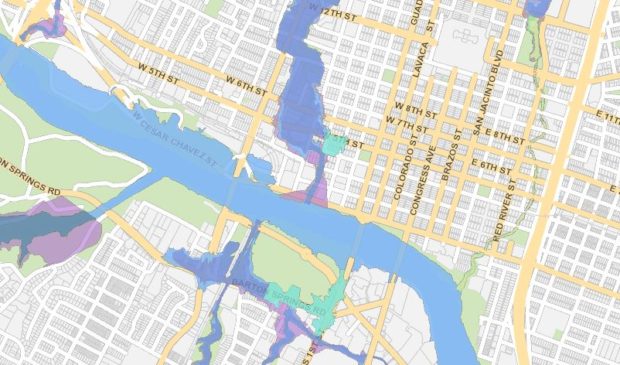Atlas 14 flood plain ordinance advances with residential improvements waiver
Thursday, October 24, 2019 by
Ryan Thornton The Watershed Protection Department has crafted a way to help residents living in the city’s flood plain continue to make improvements to their homes as one component of an ordinance amending city floodplain regulations.
The Planning Commission endorsed the proposal Tuesday, but some commissioners and environmental activists expressed reservations.
Bobby Levinski, representing the Save Our Springs Alliance, supported the code amendments as a whole, but took issue with the new proposal for home improvements.
Levinski said the change, which would allow the department to grant administrative approval in place of a flood-plain variance from City Council for certain improvements, could reduce transparency of development in the flood plain and potentially lead to higher flood risk. He urged the commission to proceed with caution, admitting that the proposal may look safe now, but could become a source of regret as changes in the climate become more acute over the next decade.
Commissioner Patricia Seeger said the residential improvements component is “pretty much last-minute” and puts the commissioners “in an uncomfortable position” in light of the pressure to approve the entire Atlas 14 draft ordinance. Even so, Seeger voted for the Atlas 14 code amendments to help make sure they are adopted at City Council on Nov. 14.
Council Member Leslie Pool announced to her District 7 email subscribers Tuesday that the change, which appeared in a staff memo about the ordinance on Oct. 14, reflects the “tremendous fruit” of their conversations and engagement on Atlas 14. Along with their deep concerns about flood risk in their neighborhoods, Pool said residents “expressed the need to ensure that homes remain viable places to live” over time.
According to the findings of Atlas 14, a study of regional rainfall volumes by the National Weather Service, the city of Austin is likely to see bigger rainstorms than previously expected, leading to more severe flooding and impacting more properties.
That means more city homeowners will need to comply with flood-plain regulations if they want to add on or renovate, but many of those homes are already out of compliance with the current Atlas 14 draft ordinance’s requirements for both safe access to the building and minimum freeboard distance, the space between the flood plain and the floor.
Kevin Shunk, a flood-plain administrator with Watershed Protection, explained that without the residential improvements piece, the ordinance would prohibit homeowners from building an addition to their homes without getting a flood-plain variance from Council, even if the add-on itself meets the freeboard requirement.
The revised ordinance would allow staff to approve such improvements by waiving the requirement for safe access, as long as the freeboard requirement is met and the development doesn’t increase the structure’s actual flood risk.
The exception would not apply to substantial improvements, which the department defines as being worth 50 percent or more than the value of the entire home, not including the cost of land.
The Atlas 14 draft ordinance includes changes to the regulation of development within the 25- and 100-year flood plains, as informed by the study’s updated rainfall data. The commission approved the recommendation of the draft ordinance on consent.
Map courtesy of the city of Austin.
The Austin Monitor’s work is made possible by donations from the community. Though our reporting covers donors from time to time, we are careful to keep business and editorial efforts separate while maintaining transparency. A complete list of donors is available here, and our code of ethics is explained here.
You're a community leader
And we’re honored you look to us for serious, in-depth news. You know a strong community needs local and dedicated watchdog reporting. We’re here for you and that won’t change. Now will you take the powerful next step and support our nonprofit news organization?







